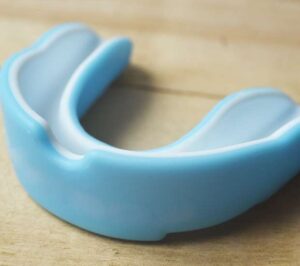 Esthetic dentistry can provide a middle ground between the health-focused care of general dentistry and the appearance-focused improvements of cosmetic dentistry. While the closely related field of cosmetic dentistry can be a good option for making visible or dramatic changes, an esthetic approach may be recommended for patients who primarily want to maintain a healthy smile with natural-looking teeth.
Esthetic dentistry can provide a middle ground between the health-focused care of general dentistry and the appearance-focused improvements of cosmetic dentistry. While the closely related field of cosmetic dentistry can be a good option for making visible or dramatic changes, an esthetic approach may be recommended for patients who primarily want to maintain a healthy smile with natural-looking teeth.
Defining esthetic dentistry
Patients who visit an esthetic dentist may receive one or more of the following services to help make teeth brighter, more durable, and healthier overall:
Esthetic dentistry may not focus on whitening teeth artificially or considering more invasive treatments and restorations to dramatically alter the patient’s smile. At times, both services are used, while other times the esthetic approach provides exactly what is needed to correct a functional or appearance problem in a patient’s teeth.
Considering tooth color and opaqueness when restoring a smile
Most patients do not want artificial-looking or bleached-white teeth. Practitioners of esthetic dentistry know this and take into consideration both the color and the opaqueness of each tooth when a plan is made to restore a patient’s teeth or elevate the overall state of health of the mouth.
Tooth color
Before fillings or bridges are placed on a patient’s teeth, the dentist must consider the natural tooth color. Will the filling material match the patient’s teeth, or should it be altered using a shade-matching tool? Creating a natural look is the practitioner’s goal here.
Tooth opaqueness
The opaqueness of a tooth refers to how solid it looks when the light shines through it. Is the tooth nearly transparent, which may be the result of enamel loss, or does it look hard and durable? When providing a replacement for a tooth or a crown that fits on top of the tooth, dentists must determine both the color and the opaqueness to create a realistic-looking solution that will be indistinguishable from the rest of the patient’s teeth.
Check out what others are saying about our dental services on Yelp: Dental Aesthetics in Tamarac, FL
Conclusion
For patients who are looking to get tooth replacements, it is important to consider the color and opaqueness of the natural teeth to match the shade as closely as possible. Esthetic dentistry seeks to improve the overall health of the patient’s teeth by focusing on less invasive methods and strives to attain a natural look. Consult with a licensed dentist about which esthetic methods can help you attain your desired smile and tooth color.
Request an appointment or call The Dental Place of Tamarac at 954-271-8072 for an appointment in our Tamarac office.
Related Posts
An esthetic dentist can help you keep the natural condition of your teeth. The goal of restorative dentistry is not only cosmetic but also for better oral health. Esthetic dentists want to help restore and maintain your oral health. Ideally, you should try to preserve your natural teeth if you can.Braces and other aligners are…
Restorative or esthetic dentistry is not the same as cosmetic dentistry. This field of dentistry brings back the normal structures of gums and teeth. It also aims to return the function of these mouth parts. It focuses on providing comfort, health, and durability to patients. It can help patients look, feel, and function better. Here…
Esthetic dentistry concentrates on improving the appearance and function of a patient’s oral environment. Achieving this goal helps you to achieve a natural, vibrant, and healthy appearance. By the end of your esthetic treatments, you will notice an improvement in your mouth’s function as well. If you want to find out about the common dental…
We are committed to providing quality healthcare to families located in the Tamarac area and treat patients of all ages.
The Dental Place of Tamarac
7300 W McNab Rd Ste 115
Tamarac, FL 33321
Phone: (954) 271-8072
Book Your Appointment Today!




